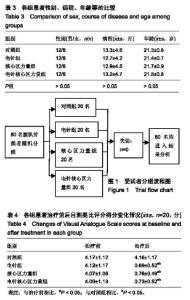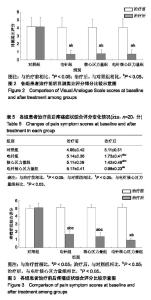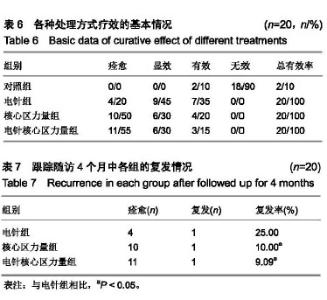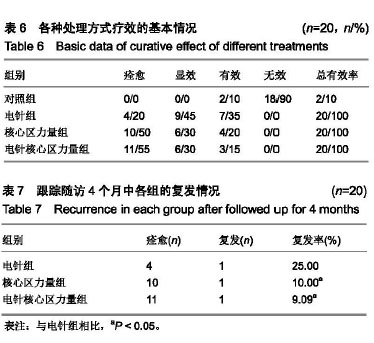| [1]Qaseem A,Wilt TJ,McLean RM,et al.Noninvasive Treatments for Acute, Subacute, and Chronic Low Back Pain: A Clinical Practice Guideline From the AmericanCollege of Physicians.Ann Intern Med.2017;66(7):514-530.[2]中国康复医学会脊柱脊髓专业委员会专家组.中国急/慢性非特异性腰背痛诊疗专家共识[J].中国脊柱脊髓杂志, 2016,26(12):1134-1138.[3]National Institute for Health and Care Excellence. Low back pain and sciatica in over 16s: assessment and management (NG59). https://www.nice.org.uk/guidance/ng 59,2016.[4]宋丰军,胡建锋,张红,等.理筋促通手法配合膀胱经走罐治疗腰肌劳损80例临床分析[J].辽宁中医杂志,2015,42(7):1248-1259.[5]宋斌,宋红,王鸿儒,等.腰宁汤联合麝香止痛贴膏治疗寒湿瘀阻型慢性腰肌劳损的临床评价[J].中国实验方剂学杂志, 2016,22(18):159-163.[6]张宏发.火针配合小针刀治疗慢性腰肌劳损58例[J].中国针灸, 2014,34(6):572.[7]付蔷,李超,崔清国.针灸配合中医定向透药治疗腰肌劳损疗效观察[J].中国实验方剂学杂志,2016,35(2):192-194.[8]莫凯祺.针刺配合放血疗法治疗慢性腰肌劳损症37例[J].中国实验方剂学杂志, 2017,20(1):27-28.[9]黄萍萍,廖军,郑佳璇,等.艾灸疗法治疗腰腿痛的文献研究[J].时珍国医国药,2015, 26(2):407-408.[10]秦玉革,王峰,秦玉恒,等.国家中医药管理局.中医意气针灸疗法综合治疗寒湿型腰肌劳损临床研究[J].中国针灸, 2015,35(11):1117-1119.[11]木志友,邹蕊,李亮. 改善慢性腰肌劳损康复治疗手段的比较研究[J].北京体育大学学报,2014,37(12):67-71.[12]中共中央国务院.“健康中国2030”规划纲要[Z].2016.10.[13]国家中医药管理局.中医病症诊断疗效标准[J].南京:南京大学出版社,1994: 151-190.[14]南登昆,郭正成.康复医学临床指南[M].北京:科学出版社,1999:10-17. [15]郑筱萸.中药新药临床研究指导原则[M].北京:中国医药科技出版社,2002: 6342-6345. [16]袁秀丽.盲针治疗腰椎间盘突出症临床观察[J].中国针灸, 2004,24(3):173.[17]励瑞芬,;向东.电针治疗腰肌分损疗效的对比研究[J].上海医药,2012,33(8): 33-34.[18]王安利,矫玮.运动康复技术[M].北京:北京体育大学出版社, 2015.[19]赵星,罗冬梅,单西瑶,等.腰椎稳定性对NLBP 患者躯干肌群形态机能特性的影响[J].北京体育大学学报,2016,39(7):52-58. [20]黎涌明,于洪军,资薇,等.论核心力量及其在竞技体育中的训练一起源问题发展[J].体育科学,2008,28(4):19-29.[21]汪敏加,张艺宏,宋思琦.核心稳定性运动对慢性非特异性腰痛患者腰骶结构的影响[J].首都体育学院学报,2017,29(5):459-462[22]陈炳霖,郭佳宝,李欣,等.青年慢性非特异性腰痛患者腰部本体感觉及其与肌力的相关性[J].中国康复医学杂志, 2017,32(2):187-191. [23]Puntumetakul R, Chalermsan R,Hlaing SS ,et al. The effect of core stabilization exercise on lumbar joint position sense in patients with subacute non-specific low back pain: a randomized controlled trial. J Phys Ther Sci, 2018;30 (11):1390-1395.[24]Alanazi MH ,Parent EC ,Dennett E .Effect of stabilization exercise on back pain, disability and quality of life in adults with scoliosis: a systematic review. Eur J Phys Rwhab Med.2018;54(5):647-653.[25]Young KJ,Je CW,Hwa ST.Effect of proprioceptive neuromuscular facilitation integration pattern and swiss ball training on pain and balance in elderly patients with chronic back pain.J Phys Ther Sci.2015;27(10):3237-3240.[26]Kumar T,Kumar S,Nezamuddin M,et al. Efficacy of core muscle strengthening exercise in chronic low back pain patients.J Back Musculoskelet Rehabil.2015; 28(4):699-707. |





